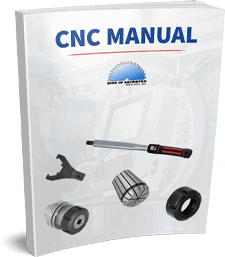Climb and conventional cutting refer to the direction of travel in relation to spindle rotation. In the case of a right-hand rotation spindle, climb cutting (clockwise direction) can produce a different result than conventional cutting (counterclockwise direction).
• In many circumstances conventional (CCW) cutting will provide the best finish, especially in plastics and with larger diameter tools. If the scrap piece has a better finish than the finished part, a change in cutting direction will provide you with the opposite results. Don’t be afraid to experiment with cutting directions or have different cutting directions on the same workpiece.
• There are also left-handed tools and holders available for left-hand rotation—climb cutting would then become counterclockwise and conventional cutting would become clockwise.
• When cutting the interior of a part as opposed to the outside perimeter, conventional cut becomes climb cut and vice versa.
• When cutting two parts with one pass such as when cutting parts that are nested or mirrored, keep in mind that one side of the cut will be conventional cut and the other will be climb cut.
• Climb cutting is more aggressive and can move small parts.
• When cutting hard materials and metals such as aluminum, climb cutting is preferred.

